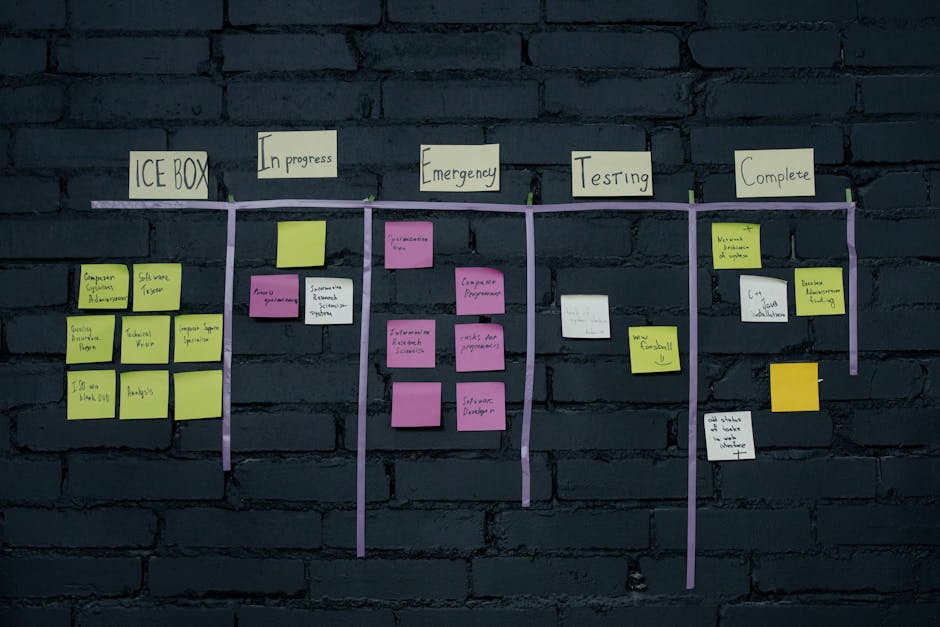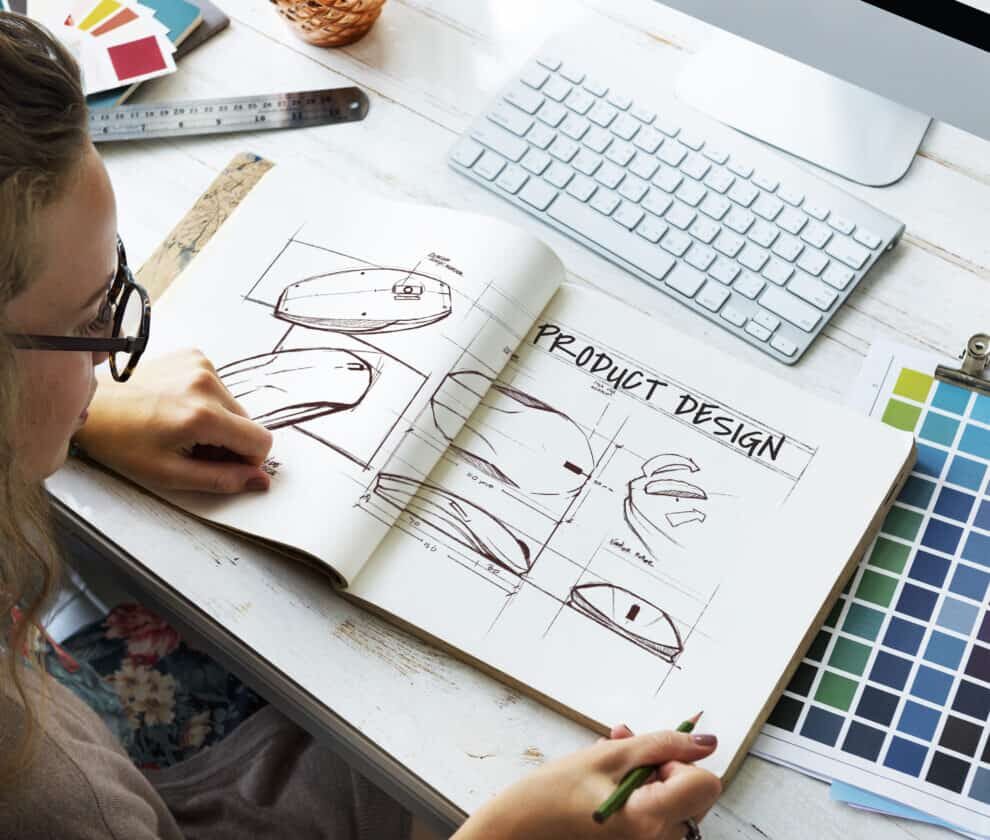The Power of Creative Digital Design in Today’s Digital Landscape
Creative digital design turns business goals into memorable online experiences—websites, apps, social feeds, even interactive installations—that look great and deliver results.
Why care? Because looks still lead: 94% of first impressions come from design, and visitors decide whether to stay in just 0.05 seconds. Good visuals signal professionalism; poor visuals send prospects elsewhere.
Design is also a growth engine. Design-led companies on the S&P have outperformed peers by more than 200%, and consistent branding can lift revenue 23%. That success starts with empathy—understanding users before choosing colors or layouts—an approach baked into every Nerdalert Solutions project here in Riverside, CA.
In this guide you’ll quickly find:
- what creative digital design is (and isn’t)
- the disciplines and tools involved
- a streamlined concept-to-launch workflow
- accessibility, ethics and future trends
- FAQs for business owners and aspiring designers
Let’s dive in and see how strategic creativity can separate your brand from the noise.

Understanding Creative Digital Design
Creative digital design isn’t just about attractive visuals; it’s about crafting complete digital experiences that guide, inform and delight. When you land on a snappy website or friction-free app, you’re experiencing designers who considered every tap, scroll and click.
At Nerdalert Solutions we view design as digital storytelling. By weaving visuals, copy and interaction into a clear narrative, brands build trust fast—75% of visitors judge credibility by design alone—and convert more customers.
How creative digital design differs from traditional graphic design
| Aspect | Traditional Graphic Design | Creative Digital Design |
|---|---|---|
| Medium | Primarily print (business cards, brochures, posters) | Digital platforms (websites, apps, social media) |
| Interactivity | Static | Interactive, responsive, animated |
| Components | Images, typography, color | UI/UX, motion, interaction, user flows |
| Timeline | Fixed once printed | Continually updated and optimized |
| Focus | Visual appeal | User experience and functionality |
| Skills Required | Visual design principles | Visual design + technical + UX knowledge |
| Metrics | Aesthetic quality | User engagement, conversion rates, analytics |
Why businesses can’t ignore creative digital design
In a digital-first world a sloppy interface costs sales. Good design acts as a trust signal, lowers bounce rates and guides visitors toward actions that grow revenue. One stat usually convinces skeptics: 88% of people won’t return after a bad experience. For a deeper dive, see our article on how creative website design boosts your brand’s image.
Core Components & Disciplines

Creative digital design is a puzzle where every piece matters:
- UI/UX – intuitive paths and screens
- Web design – responsive builds for any device
- Motion graphics – animations that reinforce messages
- 3D & AR/VR – immersive layers beyond the flat screen
- Branding – consistent colors, tone and typography
- Data visualization – turning numbers into clear stories
Behind the scenes you’ll still find classics like grid systems, type hierarchy and—crucially—accessibility so everyone can participate.
The creative digital design toolbox

We rely on:
- Figma for live collaboration
- Adobe XD or Sketch as alternatives
- Photoshop, Illustrator and After Effects for graphics & motion
- Webflow to publish responsive sites
- Lottie for lightweight web animations
- AI helpers like Khroma (color) and Uizard (rapid mock-ups)
- WAVE or Stark to keep accessibility on track
Key skills every creative digital designer needs
Successful designers blend:
- Empathy for users
- Storytelling ability
- Basic HTML/CSS awareness
- Solid visual fundamentals (type, color, layout)
- Project & stakeholder management
Our breakdown of the key elements of effective creative design explores each in more detail.
From Concept to Launch: Workflow & Collaboration in Creative Digital Design
Behind every stunning website lies a clear, repeatable process. Most agencies—including ours—follow the design-thinking loop:
- Empathize – research users and business goals
- Define – frame the real problem
- Ideate – brainstorm and sketch solutions
- Prototype – build clickable mock-ups
- Test – observe real users and gather data
- Implement – hand off to development and launch

Key collaborators:
- Designers – turn ideas into visuals
- Developers – translate visuals into code
- Content & marketing teams – craft messaging and ensure ROI
- Project managers – keep timelines tight
- Clients – provide context and approvals
Simple habits—clear file naming, shared style guides and scheduled feedback—prevent scope creep. For an example of tidy layer management, see Adobe’s guide to reducing chaos with layer groups.
Accessibility, Ethics & Legal Considerations
Let’s face it – creating digital experiences that everyone can use isn’t just nice to have anymore. It’s essential. When we talk about creative digital design that truly works, we need to think about making it accessible, ethical, and legally sound from day one – not as an afterthought.
Imagine visiting a website and struggling to read the text because the contrast is too low, or trying to click a tiny button with limited dexterity. Frustrating, right? That’s why accessibility matters so much in creative digital design.
Good accessibility means designing for everyone, including:
- People with visual impairments who might use screen readers or need high-contrast text
- Users with motor limitations who benefit from larger clickable areas
- Folks with cognitive differences who appreciate clear navigation and consistent layouts
“Design for accessibility including text-to-speech and color-blind considerations,” one designer told us during our research. This isn’t just about being inclusive – it’s about following established standards like the Web Content Accessibility Guidelines (WCAG) and complying with the Americans with Disabilities Act (ADA).

Beyond accessibility, ethical creative digital design involves respecting your users’ privacy, representing diverse audiences, and being honest in how you present information. Nobody likes feeling manipulated by dark patterns or tricked into sharing more data than necessary.
When we work with clients in Riverside and across Southern California, we always consider the legal side too – from copyright compliance to privacy regulations like GDPR and CCPA. These aren’t just boxes to check; they’re protections that build trust with your audience.
Designing responsibly in creative digital design
Responsible design is about more than meeting minimum requirements – it’s about creating digital experiences that actually make the world a little better. At Nerdalert Solutions, we believe in design that respects people and contributes positively to society.
What does this look like in practice? It starts with ethical data usage. Only collect what you genuinely need, be transparent about how you’ll use it, and give users real control over their information. As Google’s Privacy Policy emphasizes, user consent and clear disclosure aren’t optional extras – they’re fundamental principles.
Representation matters too. When we create digital experiences, we’re telling stories about who belongs and who matters. Inclusive imagery, language, and examples help ensure everyone feels seen and valued.
Intellectual property respect might sound dry, but it’s crucial. Using properly licensed assets and giving credit where it’s due isn’t just legally smart – it supports the creative ecosystem we all depend on.
Did you know that digital design has an environmental impact too? Carbon-efficient design – with optimized images, minimal unnecessary animations, and lightweight experiences – consumes less energy and reduces our digital carbon footprint.
One simple but powerful tip from our research: check “designs in pure black and white reveals contrast issues before color evaluation.” This quick technique helps spot accessibility problems early, saving time and frustration later.
For businesses, embracing responsible creative digital design isn’t just about doing the right thing (though that matters!). It’s also strategic. It builds deeper trust with customers, reduces legal risks, and creates more sustainable relationships with your audience.
Future Trends & Career Pathways in Creative Digital Design

Tomorrow’s experiences will be even more immersive and automated:
- AR/VR and mixed-reality brand activations
- AI tools (Midjourney, Khroma) speeding concept generation
- Variable fonts for fully responsive typography
- No-code builders that let designers ship production sites
We keep a close eye on each so our Riverside and Southern California clients stay ahead of the curve.
Launching your career
Paths include:
- Four-year degrees in digital design or UX
- Accelerated bootcamps and certificates
- Self-taught routes using Coursera or YouTube—your portfolio matters most
Connect on Behance, Dribbble or local meet-ups and showcase real projects (paid or personal) to land that first role.
Inspiring examples
- Immersive “Not One Thing” frozen-treat campaign that unified digital and in-store touchpoints
- AR-improved museum exhibits turning history into interactive moments
- Netflix artwork that changes based on viewing habits, proving data-driven personalization works
For more inspiration, explore Why Creative Designs Are Essential for Effective Marketing.
Frequently Asked Questions about Creative Digital Design
What tools should I learn first?
Start with Figma for interface work, Photoshop/Illustrator for graphics, and Webflow if you want to build real websites without heavy coding. Master one before chasing the next.
How does creative digital design improve ROI?
Intuitive layouts lift conversions, strong visuals raise trust, and clear flows cut support costs. Design-led companies have outperformed the S&P by 219% over 10 years—hard evidence that aesthetics drive profit.
Can I transition from traditional graphic design to creative digital design?
Absolutely. Your eye for typography, color and composition transfers perfectly. Add UX principles, learn a screen-focused tool like Figma or Adobe XD, and study responsive layouts. Many of our best digital designers began in print.
Conclusion
Creative digital design has transformed from a visual luxury into an essential business function that directly shapes how customers perceive and interact with your brand. Throughout this guide, we’ve seen how truly effective design blends beautiful visuals with strategic thinking, genuine user empathy, and technical know-how.
The numbers tell a compelling story about design’s impact:
When 94% of first impressions come down to design, and visitors form opinions in just 0.05 seconds, your visual presentation isn’t just important—it’s everything. The fact that 75% of users evaluate your credibility based solely on website design shows just how much trust is built through visual experiences.
Perhaps most convincing for business owners: companies that make design a priority outperform their competitors by an astonishing 219%, while consistent brand presentation across platforms can boost your revenue by up to 23%. These aren’t just statistics—they’re proof that creative digital design directly affects your bottom line.
For businesses navigating today’s competitive digital landscape, investing in quality design isn’t an expense to minimize—it’s a strategic investment that delivers measurable returns and creates lasting impressions.
Here at Nerdalert Solutions, we’re genuinely passionate about helping businesses across Riverside, Los Angeles, Palm Springs, and beyond harness the power of creative digital design to achieve meaningful goals. Our team doesn’t just create pretty pictures—we blend artistic vision with business strategy to deliver designs that actually perform and convert.
Whether you’re looking to breathe new life into an outdated website, develop a cohesive digital brand identity that resonates with customers, or create interactive experiences that truly engage your audience, we’re here to guide you through the design process without the usual headaches and confusion.
Ready to open up the full potential of creative digital design for your business? Find more about The Power of Custom Web Design and Development or explore our comprehensive Creative Design services to take the first step.


